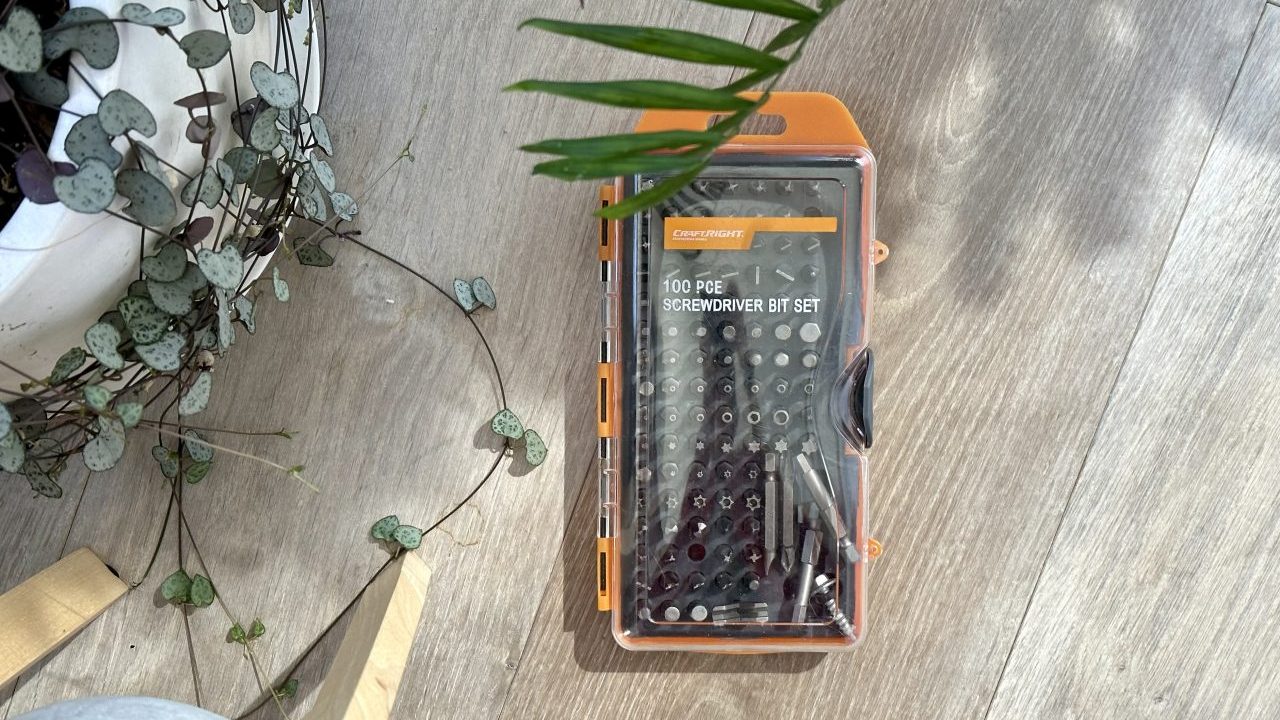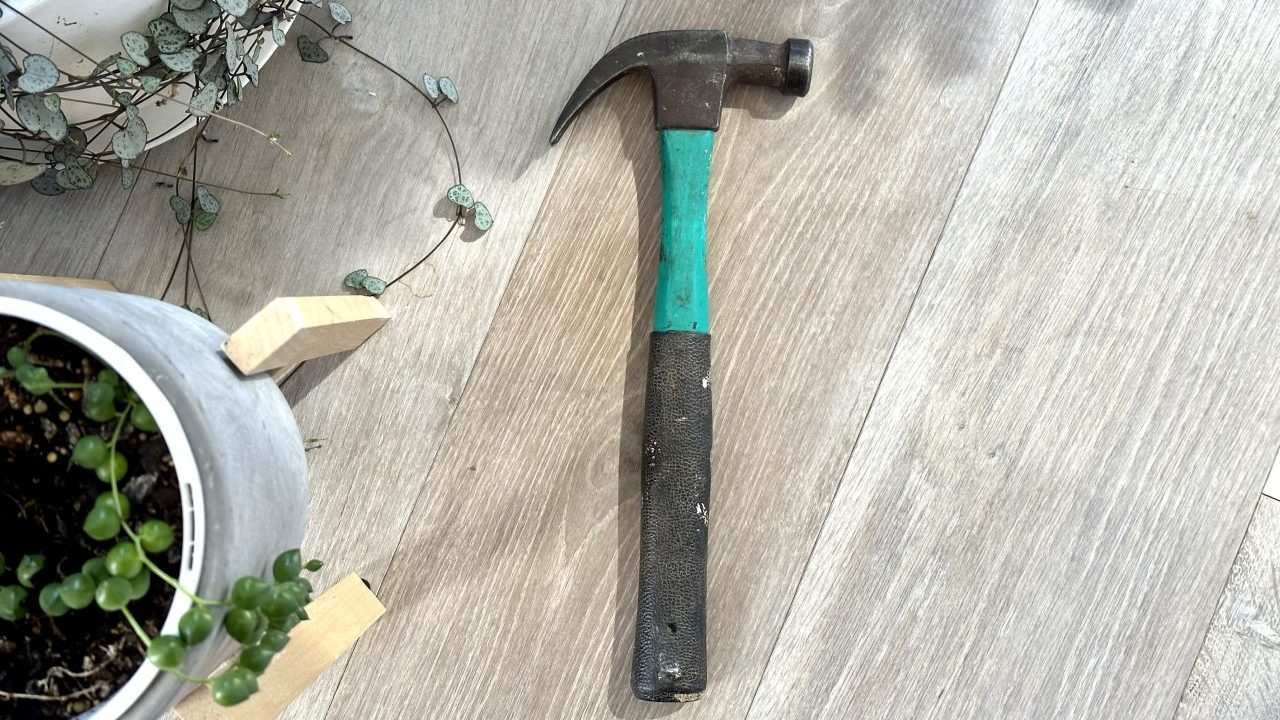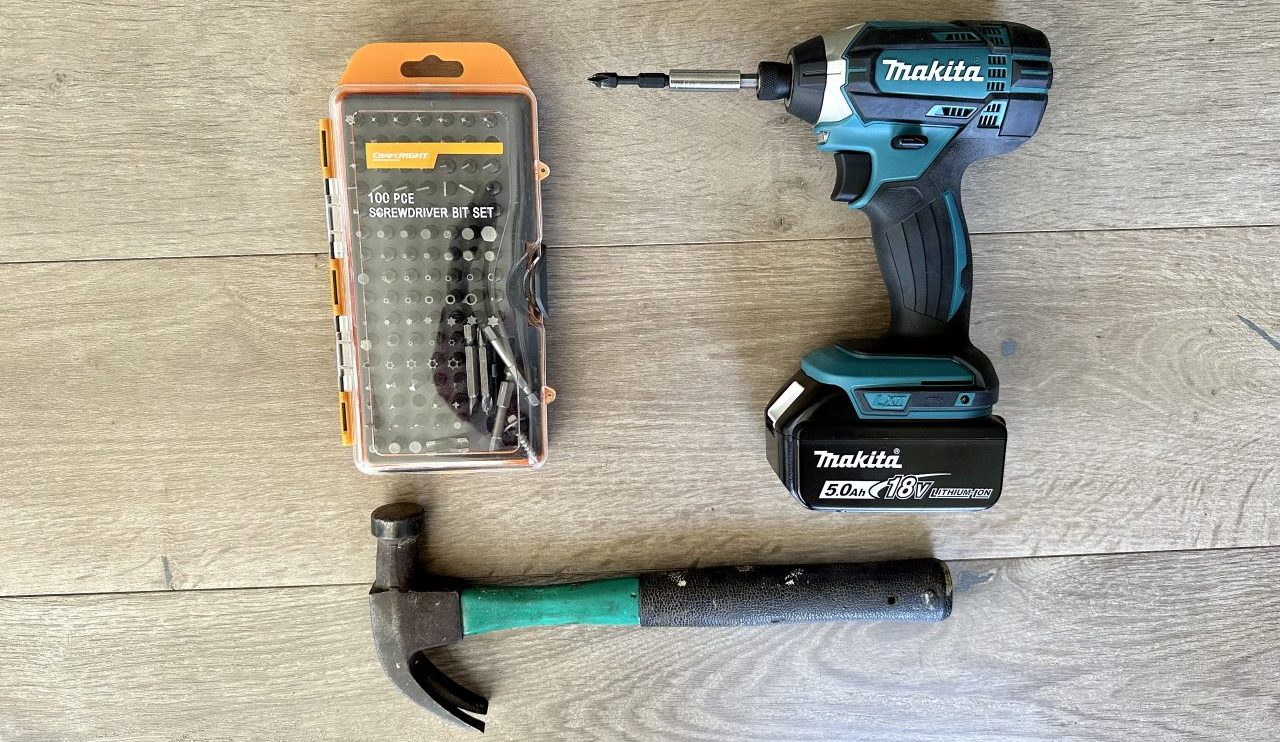So, you’ve moved out of your parents’ place, and now you need to set up your very own toolkit. Congratulations. The big question is, which power (and other) tools do you actually need to own, and which ones are better to borrow/rent? To answer this question I spoke to an ambassador for Bowens (the hardware shop), some folks from the Kennards Hire equipment hire company, a librarian, and a lesbian who enjoys building furniture (yes, I do talk to myself sometimes).
Tools you need to own
Everyone should have a set of screwdrivers, a measuring tape, a small level, a set of hex/Allan keys, a hammer and a drill. That’s a basic toolkit. Some people will say you only need a screwdriver set, but they’ve clearly never tried to construct an entire home worth of Ikea flatpacks with just the included Allan key.
Let’s break that list down and show the reasons.

- When I say a screwdriver set, that doesn’t mean you need a dozen full screwdrivers with grips and everything that take up a lot of room, you can just get a set that has one body with a variety of interchangeable heads. These are great, because you can often also use the heads in your drill, too, and vice versa. While it would have been great if the world could have decided on one universal screw head size, they come in a pretty wide variety. You can get away with using flathead screwdrivers on Philips head screws, but you’re going to get better torque if you use the right tool for the job.
- You will need to measure so many more things than you think you would need to, and should probably measure even more things than you actually do. A good tape measure will last you for life. You can get fancy laser ones, but really, a metal one that you can lock in place will do the job just as well, and last longer.
- If you buy all your furniture new, they’ll come with the Allan/Hex keys you need, so you can just keep those in your tool kit. But, if you get most things second hand, then buying your own kit is really handy for when things need to be tightened or moved. Plus, some hex key kits can fold up like Swiss Army Knives, and I just think they’re cute. You can also just get hex heads for your screwdriver kit/drill and that’ll do the job just as well, if not better.
- A small level is also really important and not that difficult to store. The most common household use is making sure your pictures are level when you hang them, but they’re also handy when adjusting TV stands, constructing furniture, and placing other decorative items. You can get big, expensive ones that’ll be useful if you tend to build big stuff, but if you’re just getting them for hanging pictures and the occasional other application, then you can get ones that are about 10cm big for around $5, and they’ll last you decades.

- Technically, a hammer is one of those tools you can just borrow when you need it, because you’ll need it a lot when you first move in (assuming you have a lot of nails and the like that need hammering), and then just every now and then if you’re able to put up pictures with nailed hooks. However, they’re so cheap and easy to store that I reckon it’s better to just buy a claw hammer the first time you need it. Make sure you get one with a good claw (that’s the spiky bit on the back that you use to remove nails that are at the wrong angle or in the wrong spot), because you’ll probably already be irritated when you need to remove a nail, so be gentle with future you by making sure the claw is at a comfortable angle.
- A drill is something most people would consider a luxury, but I think it’s actually one of the foundation tools of any toolkit. Half the stuff you use a screwdriver or Allan key with would be easier and quicker with a drill if you have the right bits. I built half a house of Ikea furniture without a drill, and then did the other half with a drill, and ever since the drill has been my most important tool. It’ll save you a lot of effort and elbow grease down the track. I mostly use mine as an electric screwdriver, but it was also really helpful when I needed to put holes in the backing of my Ikea TV cabinet so my PS5 and Xbox Series X could get more airflow. I didn’t have a saw, so I drilled a series of perforations so I could just punch out the thin chipboard backing.
The question remains, though: which kind of drill do you need?
In the past I’ve only used multi-speed Driver Drills, so for this story I tried out the Makita Brushless Impact Driver Drill to compare the two. While I love the size, power and handy light of the Impact Drill, it was just too powerful for most household tasks. If you need to drill through metal or concrete, then the Impact Driver is the one for you. But if you’re mostly putting together furniture, installing plasterboard anchors, or other stuff that requires a more measured approach, then you really can’t go past the driver drill. Most driver drills will have between 2-20 settings to control the speed/power of the driver, allowing you to use it for tasks that require a more gentle touch.
Going for a cordless drill is a bit of a luxury, but if your budget can stretch that far, I 100% recommend it. Getting tangled in an extension cord while you’re already frustrated with what you’re building just adds so much stress.
As a general rule, unless you’re very handy, or have a large property you need to maintain, a drill is the only power tool you’ll actually need to own. Everything else can be borrowed or wielded by a professional.
Tools you can borrow or rent

The size of your toolkit will change depending on if you are renting your home, and how much storage space you have. But, generally, think about how much you’ll use a tool, and how difficult/expensive it would be to own it vs renting it. If you only use a chainsaw once a year, for example, then you’re probably better off renting or borrowing one. You probably also don’t need to own a circular saw, hacksaw, or other heavy duty, sharp tools because for most people the risk of getting hurt while taking them out of storage outweighs how often they’ll actually get used. Pliers are a line ball as to whether you need to own them or just borrow them, because you won’t need them too often, but when you do need them it’s probably for something you didn’t plan (like removing an errant nail, or bending a hook back). They’re cheap and small enough that it’s up to you whether you’d be more inconvenienced by having to wait to use them when you need them, or by having to buy and store them.
Another example for something to rent rather than own is that I really love the idea of doing wood turning. It looks wonderful. There is no universe in which I could justify purchasing one for my small apartment. However, renting one from Kennards Hire for a few hours/a weekend in my dad’s shed sounds like a great way to get into an impractical hobby. Kennards Hire also offers delivery and pickup if you don’t have a car.
Or, if you really can’t justify owning a mallet (even though they’re great), but still need one to put together some furniture, you can borrow one from your local tool library, or even an actual library. There are community tool libraries set up all over the country, and some traditional libraries, like the City of Melbourne Makerspace, will also let you borrow a wide variety of tools and stuff for free.
If you live in an area that doesn’t have any of those things, but you do have a group of friends, you can also band together to buy the stuff you need as a group and then share them.
Now that I have tools, what DIY stuff can I get involved with?
I’m so glad you asked. As I’ve said before, flatpack furniture is the DIY gateway drug. There are instructions, and with the right tools and confidence, it’s hard to mess up. From there you can start restoring hard rubbish, building your own PC or making your own garden beds out of pallets. Or just paint a room. Doing these things gives you skills, and thus the confidence that you can fix problems in your home as they come up, which can make you feel more independent and in control of your space.
As for what you can’t do, Bowens Ambassador and professional builder, Jeconiah Peni says “Avoid doing any electrical, plumbing, gas or structural work. These works need to be carried out by a licensed tradesperson and can be unsafe to try yourself. If you’re unsure where to start when it comes to finding a tradie that suits your project, have a look online or check out a local listing site with recommendations. It’s better to be safe than sorry.”
Basically, if it can electrocute you, flood your home, be very expensive if it went wrong (and you feel there’s a reasonable chance it might go wrong) or otherwise have a decent chance of killing you, call someone. Everything else, there’s probably a tutorial out there somewhere that can teach you how to do it.
